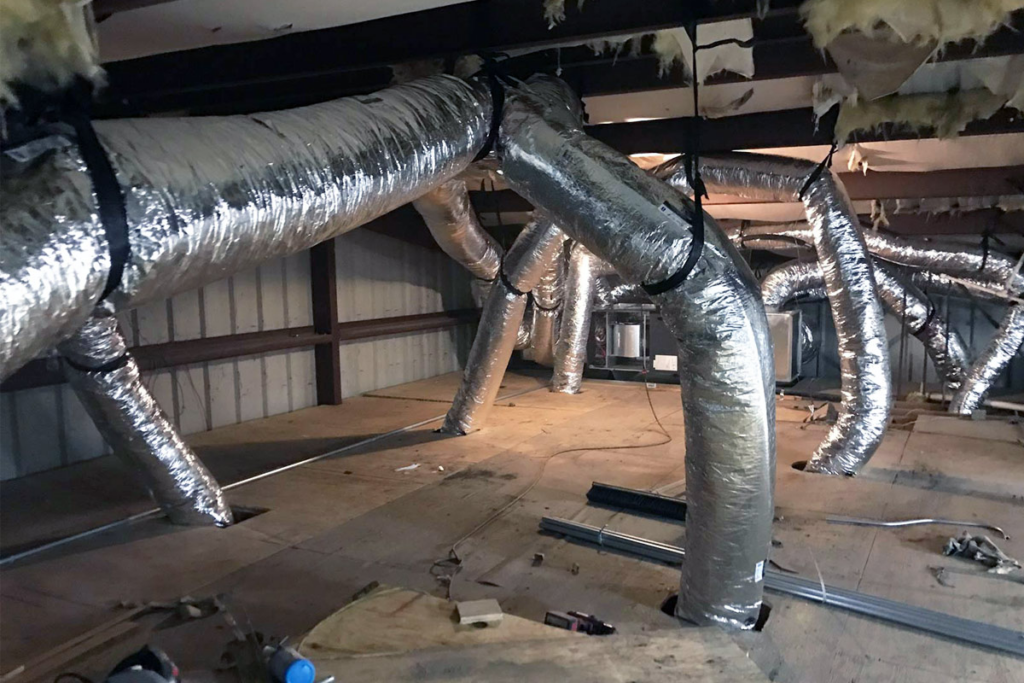Quick search
CTRL+K
Quick search
CTRL+K
When it comes to maintaining your home’s HVAC system, one of the most crucial components to consider is the air duct system. Over time, air ducts can develop leaks, cracks, or holes that can impact the efficiency of your HVAC system, reduce indoor air quality, and increase energy costs. If you’ve noticed poor air circulation, inconsistent temperatures, or higher energy bills, it may be time to think about addressing your air ducts.
There are two main solutions to consider when dealing with problematic ducts: air duct sealing and duct replacement. Each option has its own advantages and considerations, and understanding the difference between the two can help you make an informed decision about what’s best for your home. In this blog post, we’ll explore both options in detail, helping you understand which is the right choice for you.
Before diving into the specifics of sealing versus replacement, it’s important to understand why air ducts play such a vital role in your home’s HVAC system.
Air ducts are responsible for distributing heated or cooled air throughout your home. These ducts connect your furnace or air conditioner to the rooms, ensuring that the temperature remains consistent. Over time, air ducts can deteriorate due to wear and tear, age, or poor installation, which can lead to leaks and inefficiencies. When air escapes through holes or cracks in the ducts, the HVAC system must work harder to maintain the desired temperature, leading to increased energy usage and higher utility bills.
How do you know if your air ducts need sealing or replacement? Here are a few signs to watch out for:
Air duct sealing is the process of identifying and closing any gaps, cracks, or holes in your air ducts to prevent air from escaping. It is a cost-effective solution that can improve the efficiency of your HVAC system without the need for full duct replacement.
Professional air duct sealing involves a thorough inspection of the entire duct system, usually using advanced tools such as smoke pencils or pressure testers to locate leaks. Once leaks are identified, the technician will seal them using specialized materials, such as mastic sealant, or by applying metal tape.
In some cases, a more advanced technique called aeroseal is used, which is a process that injects a sealant into the ducts while they are under pressure. The sealant is attracted to leaks, and as it accumulates, it forms a permanent seal around the gaps.
Air duct sealing is ideal if you have small leaks or cracks in your ducts that don’t require a complete system overhaul. It’s a great option if your ductwork is in generally good condition but has a few minor issues causing inefficiency. Sealing is also perfect for homes with a tight budget, as it’s a more affordable option than replacement.
Duct replacement, as the name suggests, involves removing the old, damaged ducts and installing a completely new system. This is a more extensive and expensive solution compared to sealing, but it can be necessary when your ducts are severely damaged or deteriorating beyond repair.

Duct replacement is generally required when the duct system has significant structural issues, such as:
Duct replacement is a good option if your ductwork is severely damaged, outdated, or inefficient. It is also necessary when sealing cannot address the problem or when you are dealing with significant mold growth, rust, or other structural issues. While duct replacement is more expensive than sealing, it provides a long-term solution and may be the most cost-effective choice if your ducts are in poor condition.
So, how do you decide between sealing and replacing your ducts? Here are a few factors to consider:
Both air duct sealing and duct replacement offer unique advantages depending on the condition of your home’s duct system. If you’re dealing with minor leaks, air duct sealing is an affordable, effective solution that can improve your system’s performance. On the other hand, if your ducts are severely damaged or outdated, duct replacement may be necessary for long-term efficiency and comfort.
When in doubt, it’s always a good idea to consult with a professional HVAC technician. They can assess your ducts, offer recommendations, and help you determine which option is right for your home based on your specific needs and budget.
© All rights reserved.